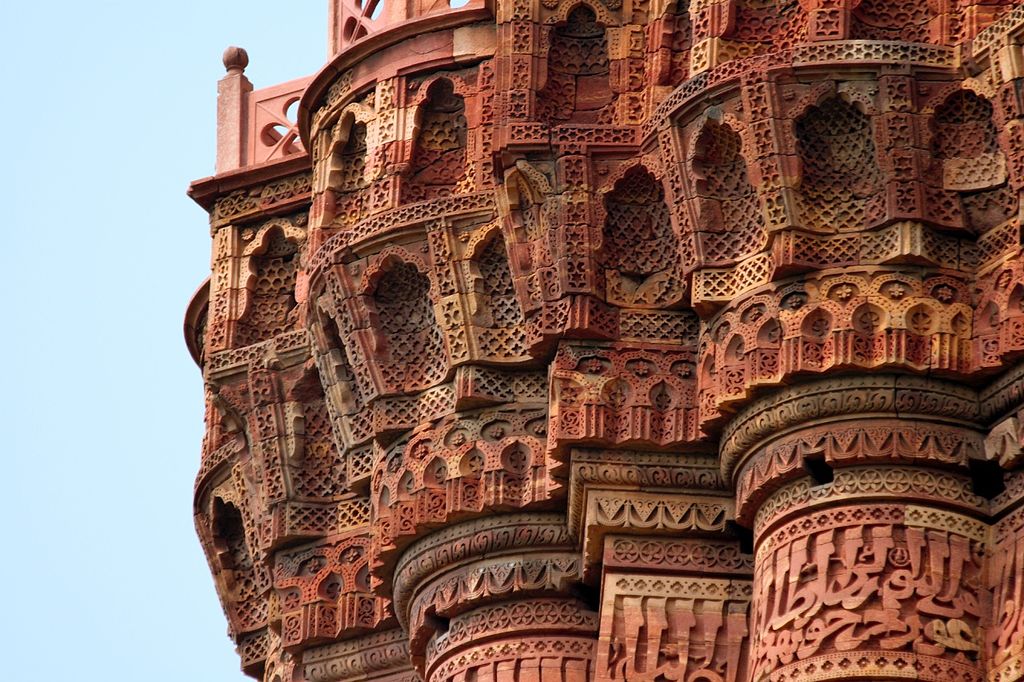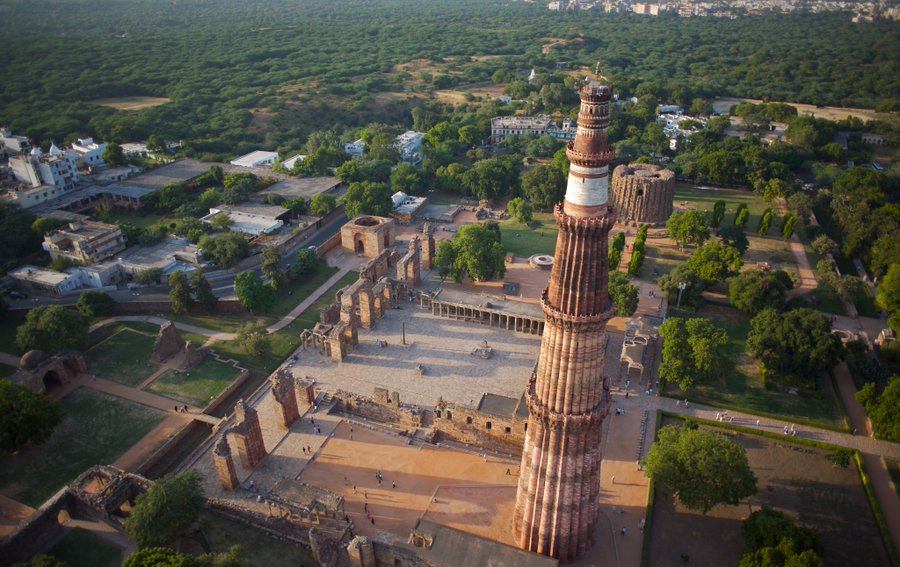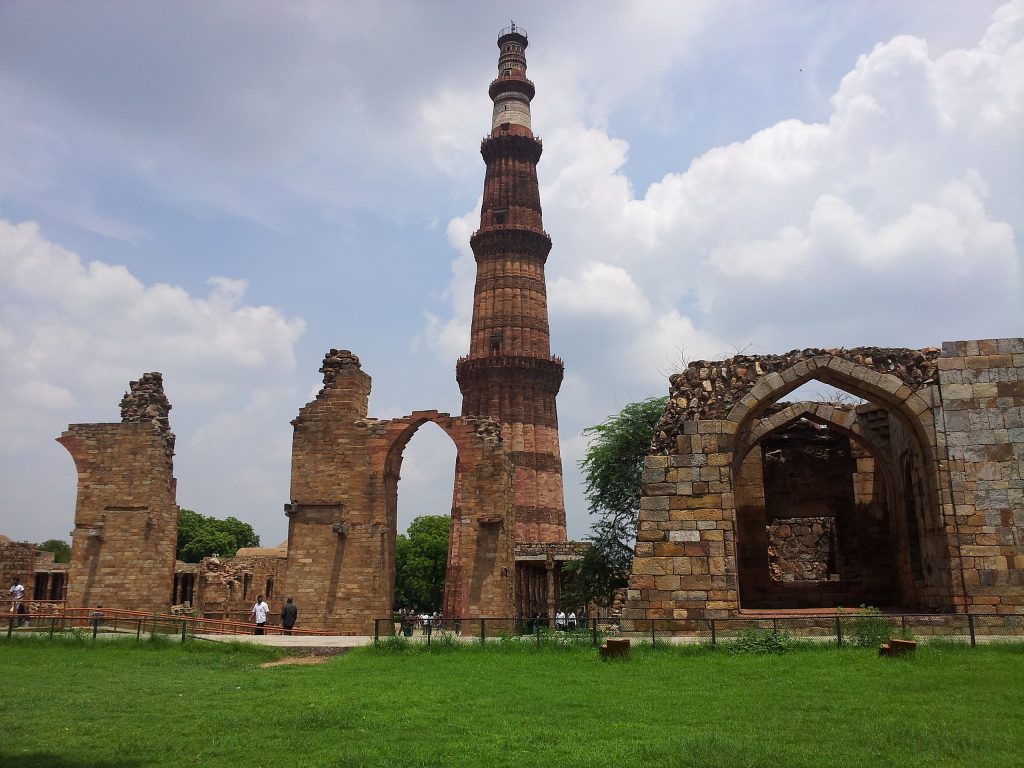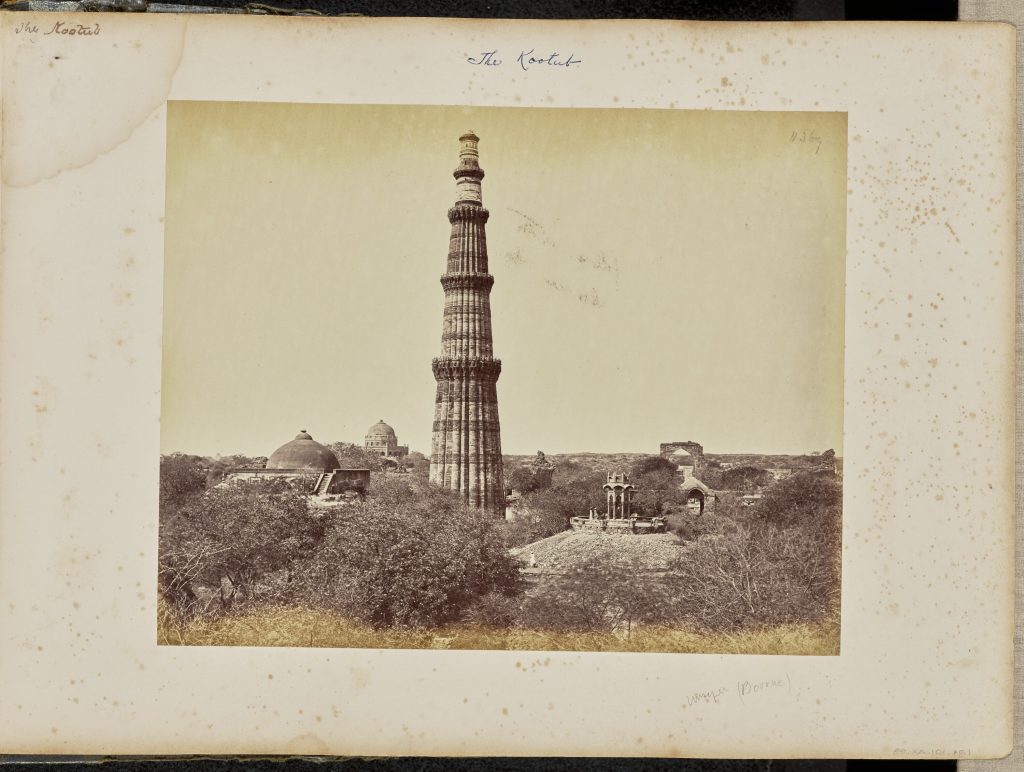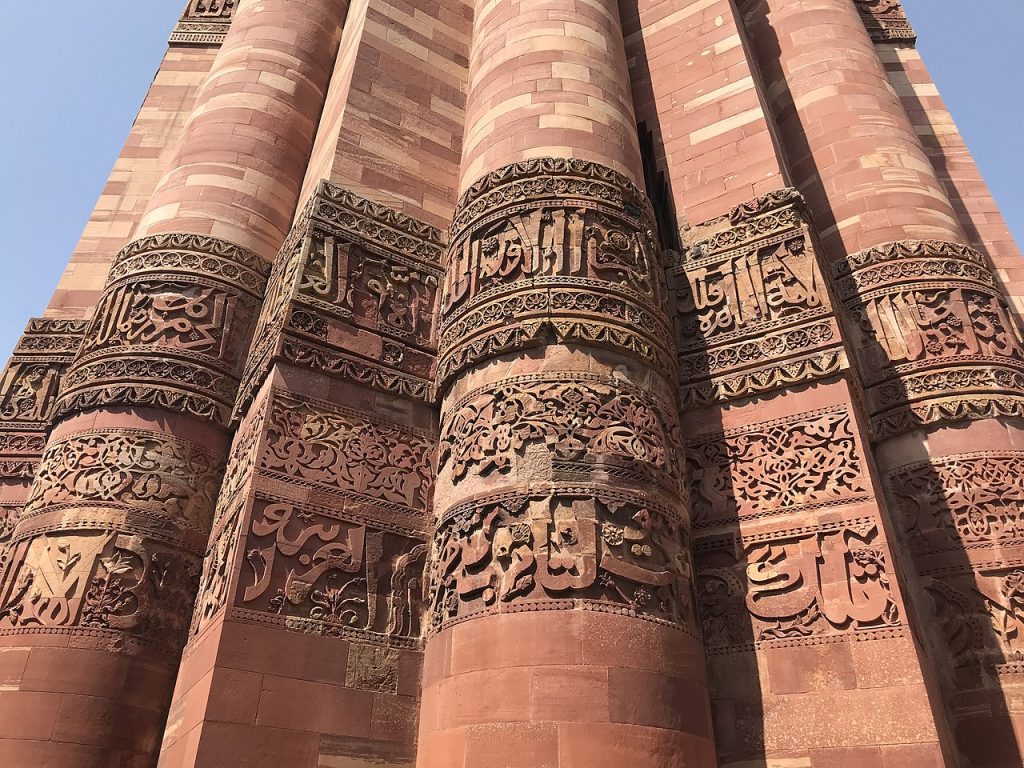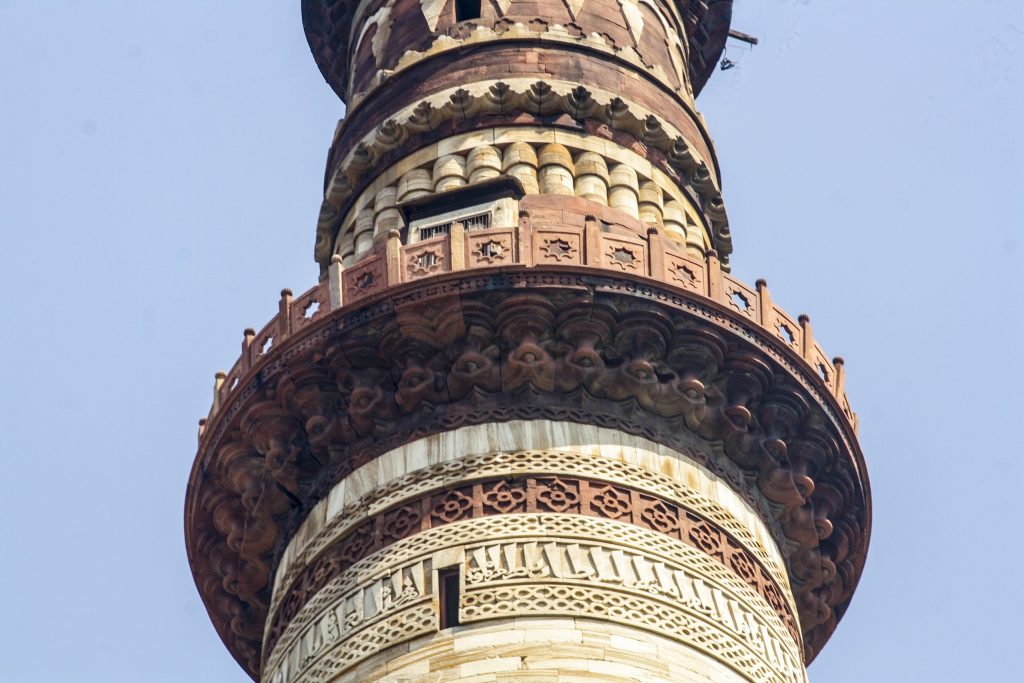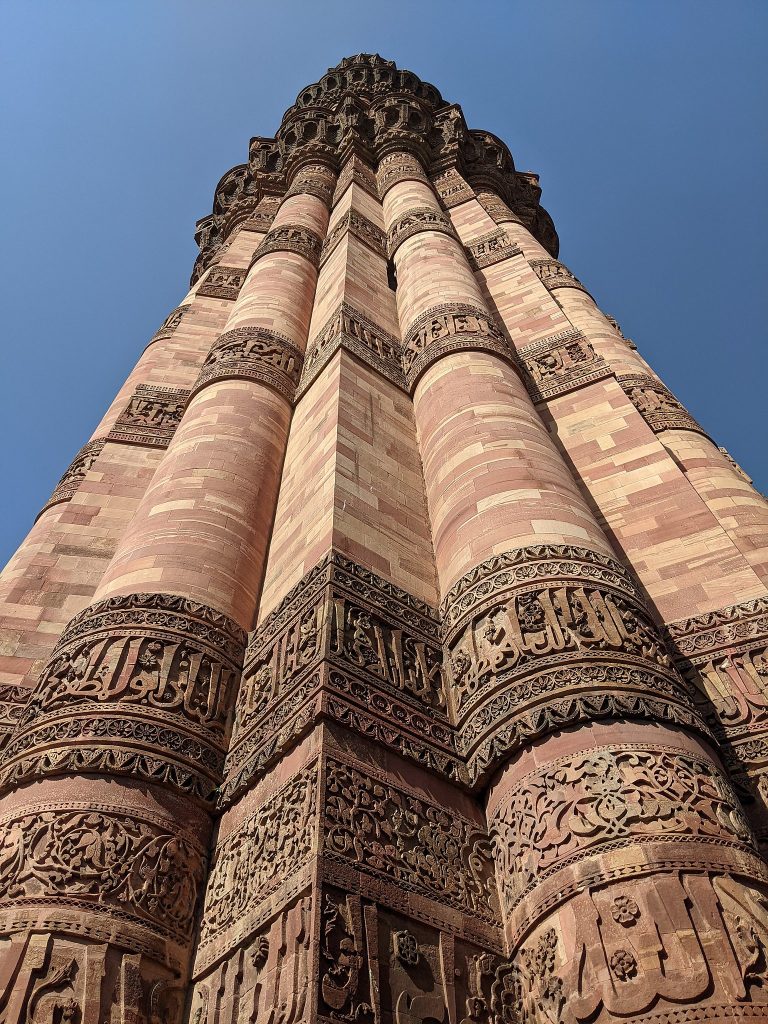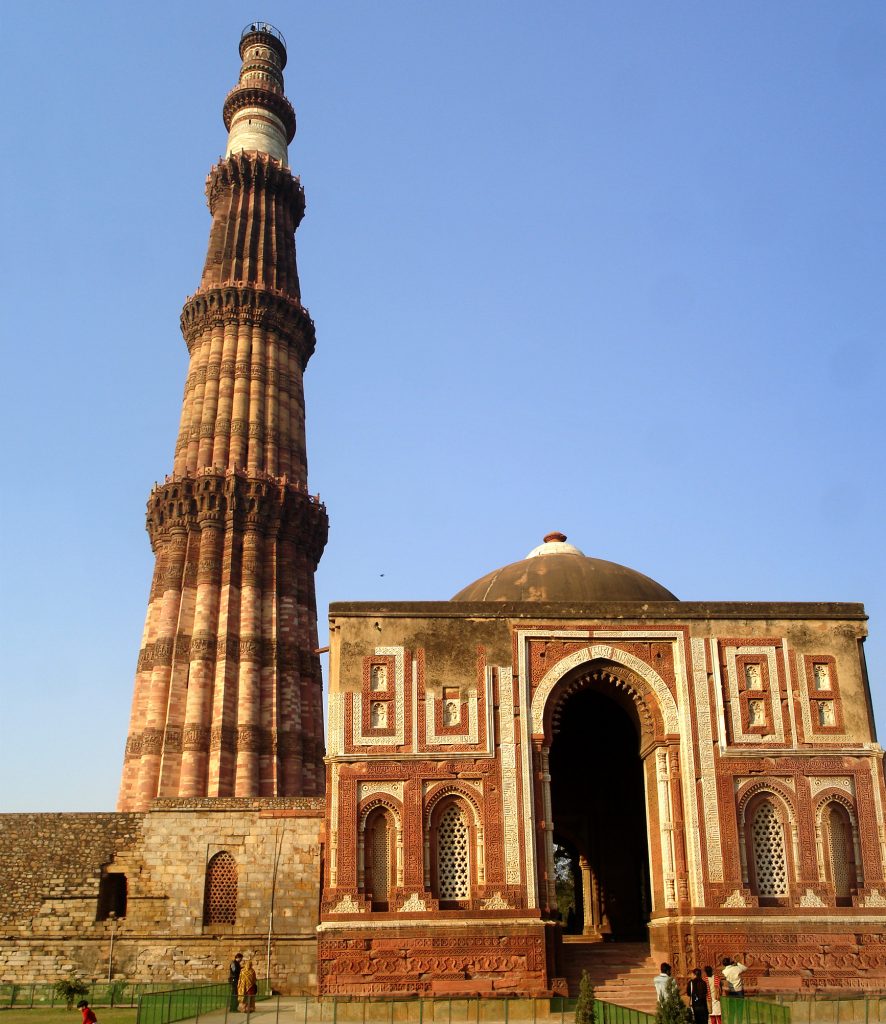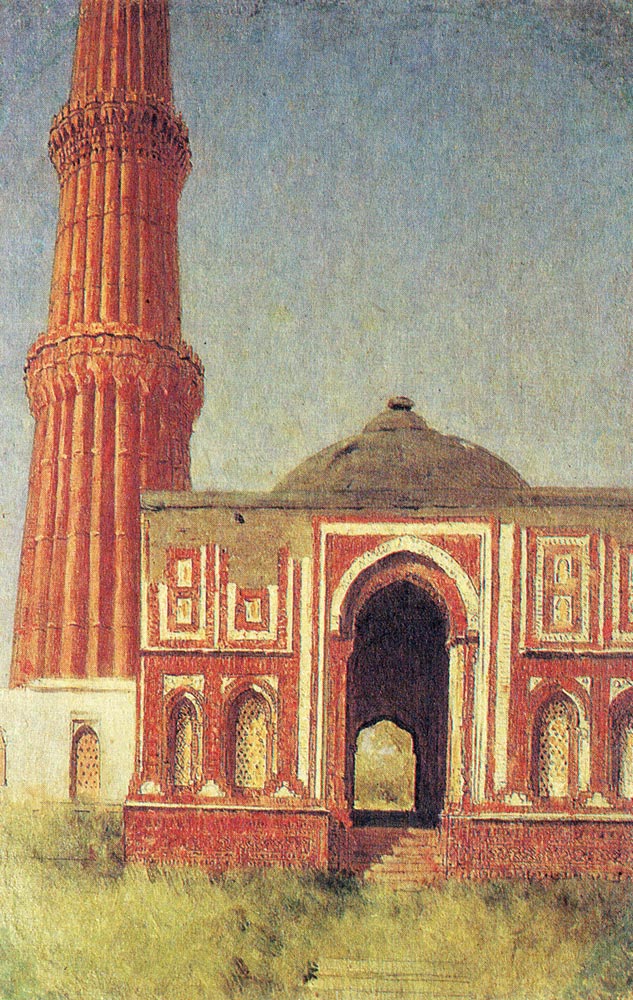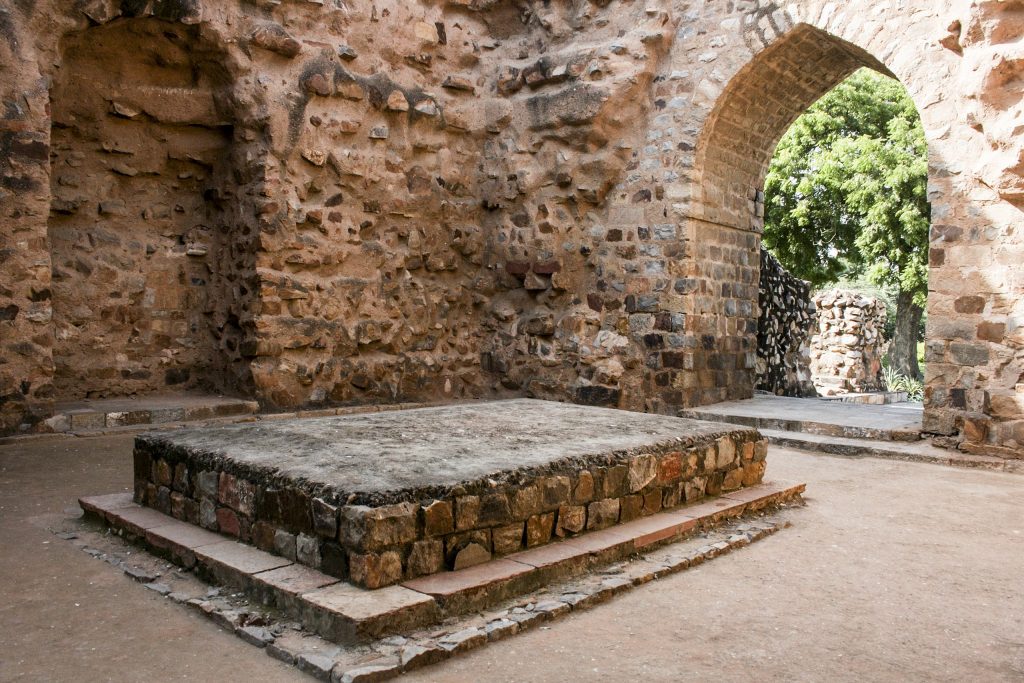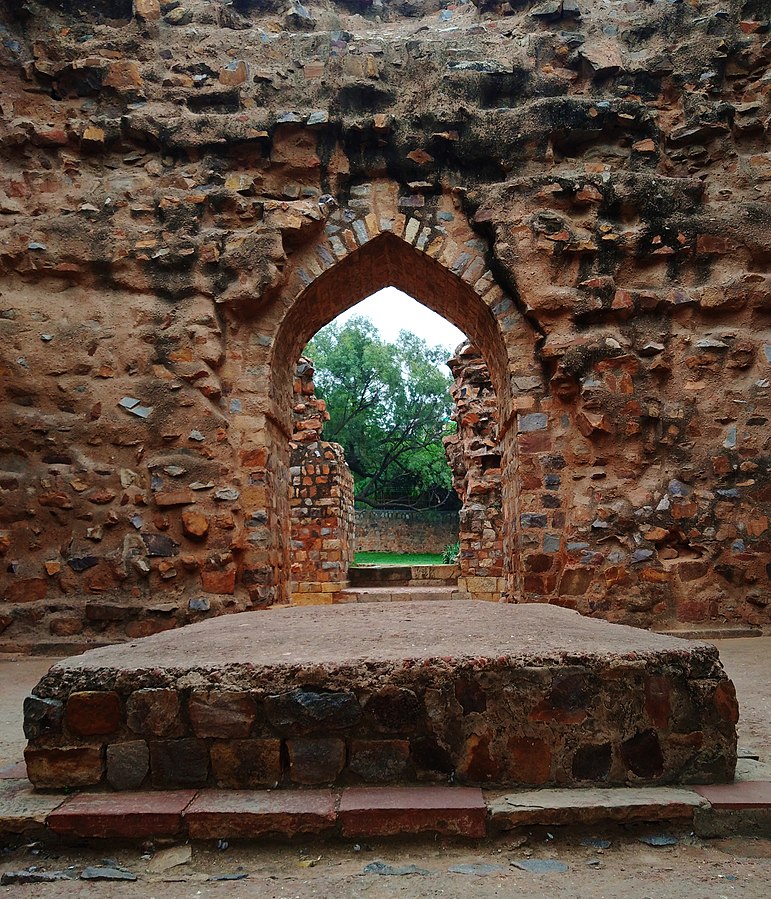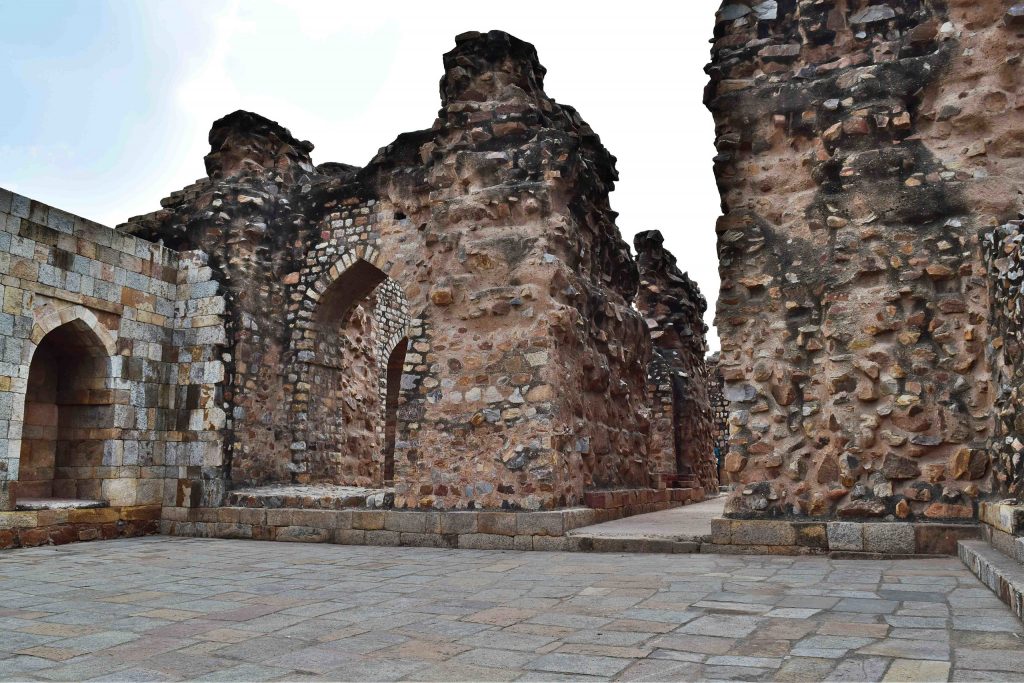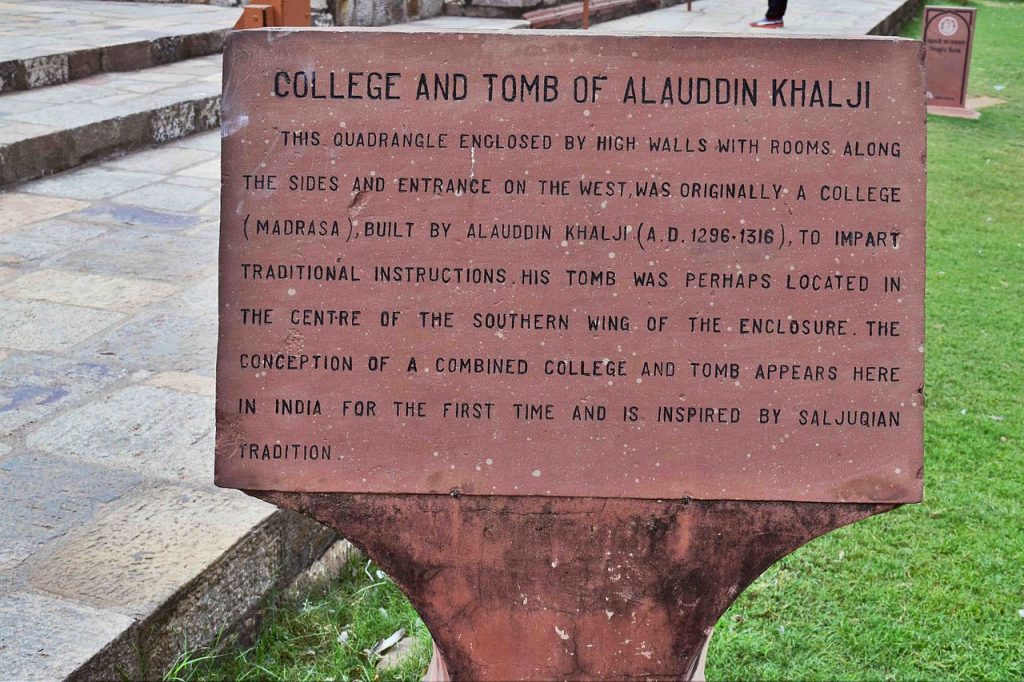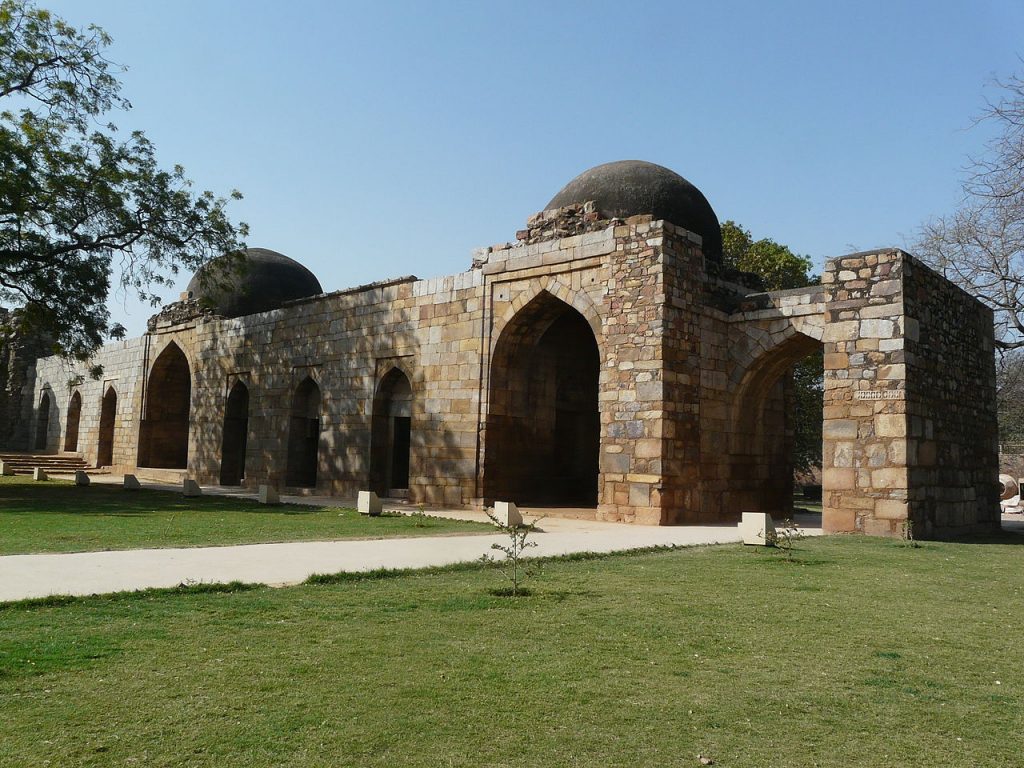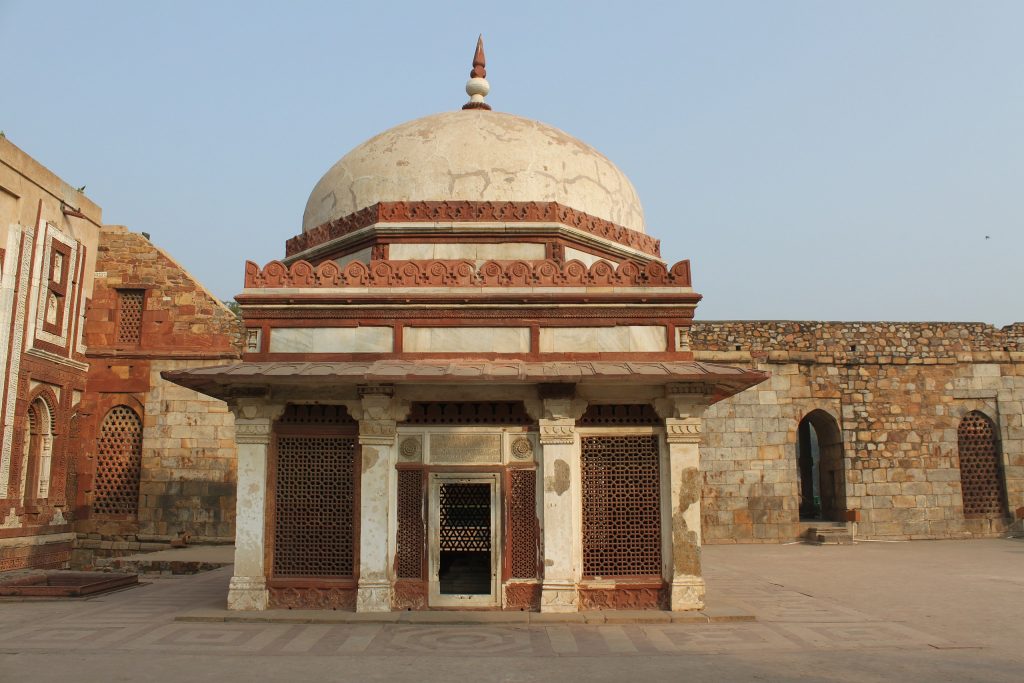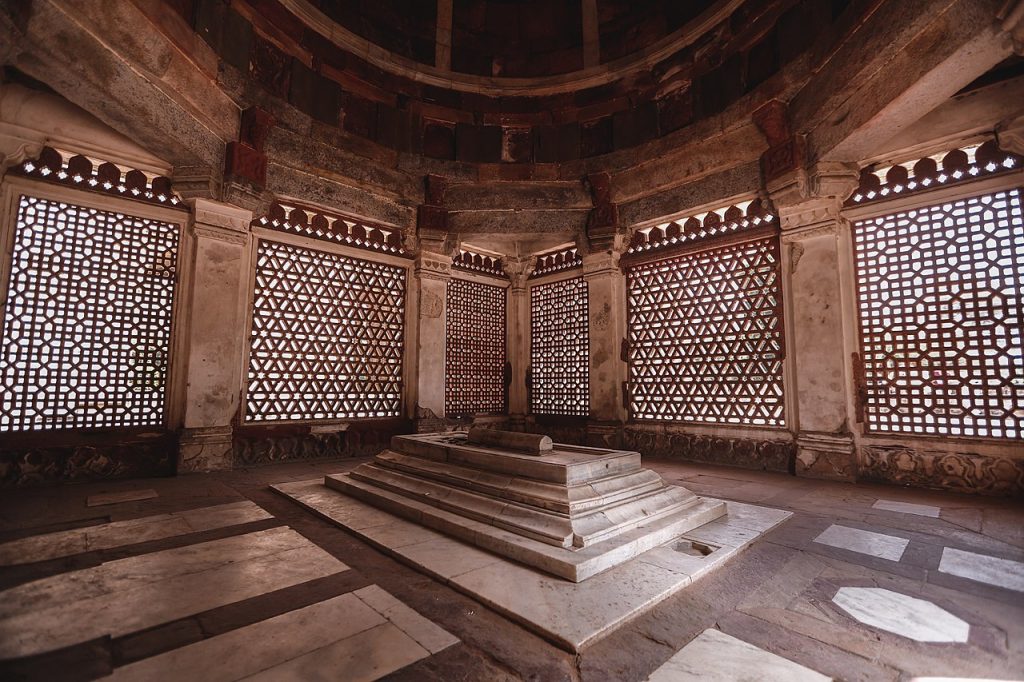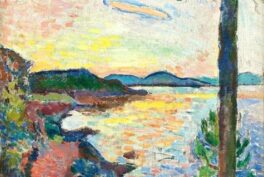Summary
- The Qutub Complex comprises many notable structures from the early Islamic period in the Indian peninsula.
- This region was under Rajput rule for about a century before the foothold of the Delhi Sultanate.
- Legendary king, Prithviraj Chauhan, was overthrown by the Ghurid army and Lal Kot fell to the invaders.
- Qutb ud-Din Aibak established the Delhi Sultanate and commissioned the Quwwat-ul-Islam mosque and Qutub Minar.
- Ala ud-Dīn Khaljī left an indelible mark on the architecture of the Qutub Complex.
- The Qutub Minar is the culmination of several rulers of the Delhi Sultanate.
- The British rulers undertook significant restoration efforts in the 19th century.
- The Qutub Complex is home to several notable tombs.
- The site hosts the famous Iron Pillar from the ancient Gupta period.
History of Lal Kot
The site in south Delhi was a location of significance for a large duration of South Asian history. The area, known as Lal Kot, was the first fortified settlement in what is now the National Capital Region (NCR). Lal Kot was under the dominion of the Tomara kings for about a century until they were overthrown by the Chauhans’ of Ajmer in the 12th century. The great Chauhan ruler and warrior king, Prithviraj III (also known as Prithviraj Chauhan or Rai Pithora), came into control of Lal Kot.
The Fall of Prithviraj Chauhan
In 1192 CE, Prithviraj Chauhan was defeated and executed by the Ghurids, who hail from present-day Afghanistan, at the Second Battle of Tarain, and Lal Kot fell into the invaders’ control.
This was a landmark event in the Islamic conquest of India and ushered in the early Islamic period in South Asia.
Qutb ud-Din Aibak’s Commissions
Following the assassination of Muhammad Ghori in 1206, his Turkic general, Qutb ud-Din Aibak, took charge of the Ghurid territories in northern India. He is credited with the establishment of the Delhi Sultanate and became the first ruler of the Mamluk dynasty (also known as the Slave dynasty) that would rule the Sultanate until 1290.
Qutb ud-Din Aibak commissioned the Qutub Minar and the in honor of this momentous victory in the Indian peninsula.
Quwwat-ul-Islam Mosque
The Quwwat-ul-Islam mosque is the oldest in northern India and its style and design were based on the classic model of Islamic architecture that had developed in and around the Ghurid homeland. The layout comprises a large courtyard that was enclosed by cloisters. Although most of the structure is presently in ruins, it provides a comprehensive look of the past grandeur of this historically significant house of worship.
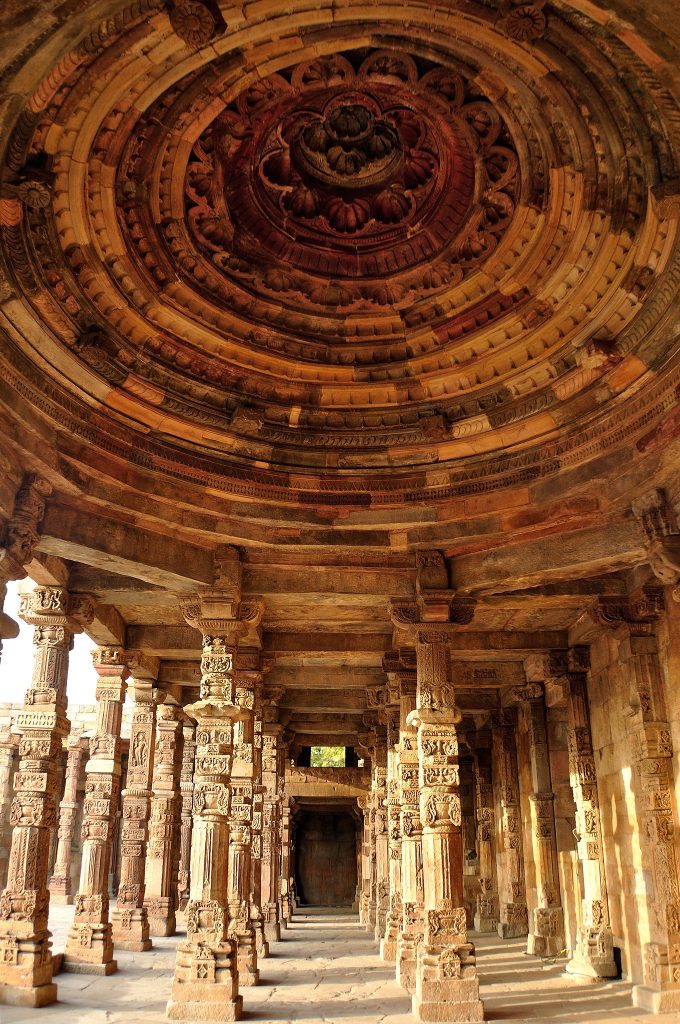
Carved stone pillars and dome of the Quwwat-ul-Islam Mosque. Photograph by Divya Gupta via Wikimedia Commons (CC-BY-SA-3.0).
Vast Sections of Spolia
The Qutub Complex bears the remnants of the civilizations that came long before the Delhi Sultanate. Significant components of the Quwwat-ul-Islam mosque were built using spolia from Hindu and Jain temples of the neighboring region. Inscriptions evidence that twenty-seven temples were demolished to provide the masonry for the mosque and large segments of spolia are apparent in several areas of the structures. The Hindu motifs, and particularly the figurative forms in the relief work of the temples, were defaced to conform to the Islamic iconoclast beliefs.
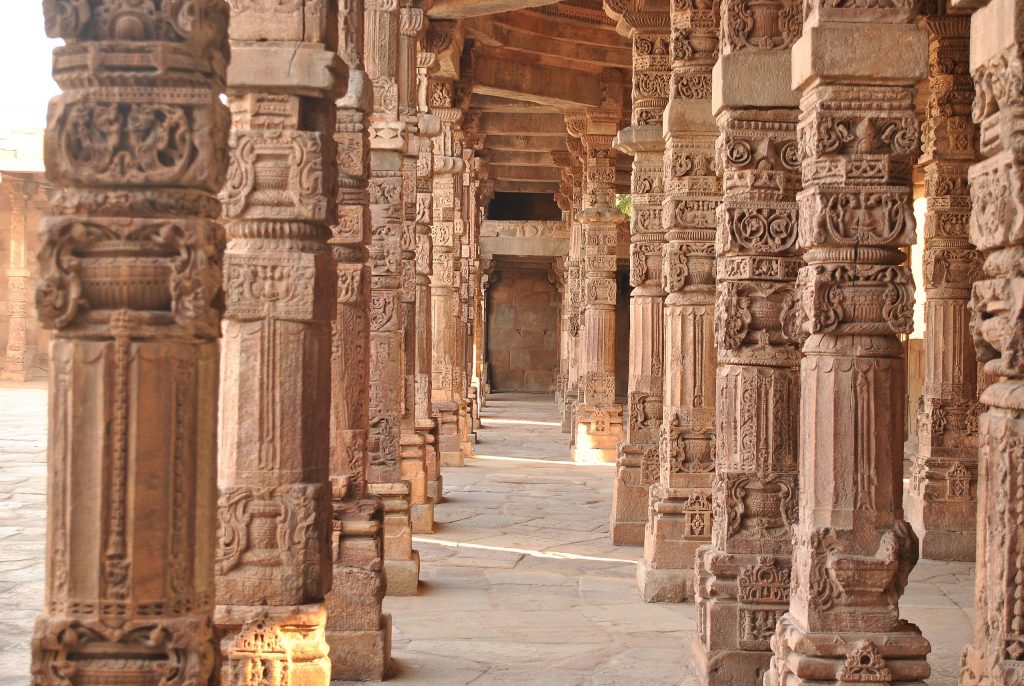
Hindu carving on stone pillars of the Quwwat-ul-Islam Mosque. Photograph by Divya Gupta via Wikimedia Commons (CC-BY-SA-4.0).
The Many Builders of the Qutub Minar
It is believed that the Qutub Minar was commissioned as a symbol of the victory of the Delhi Sultanate over the Rajput kings. Qutab ud-Din Aibak initiated the construction in 1199 but only one floor was completed during his lifetime. His son-in-law and successor, Shams ud-Din Iltutmish, added three more levels to the minaret by 1220.
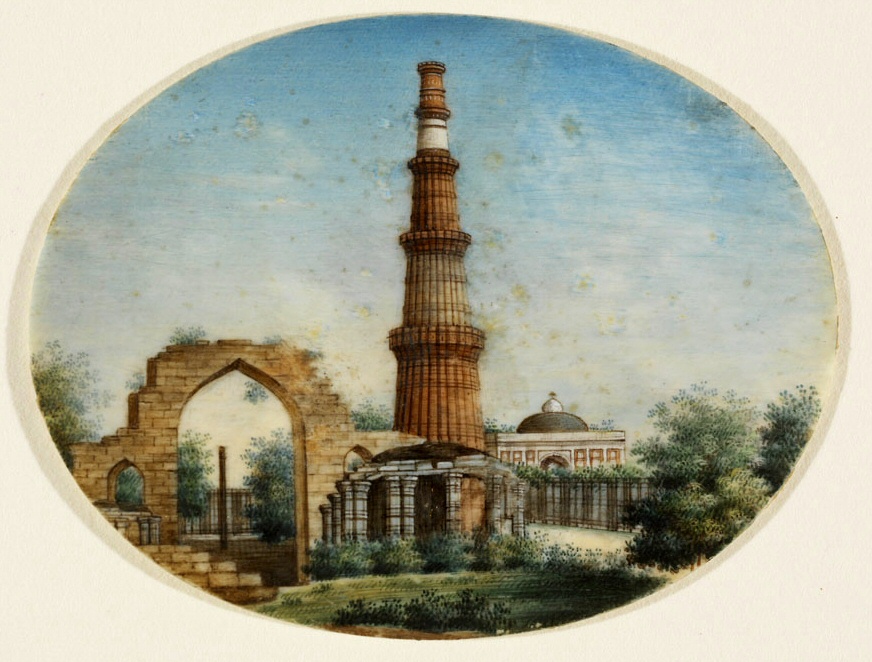
Qutub Minar in Delhi in watercolor and black chalk on ivory, ca. 1800s. Rhode Island School of Design, Providence, RI, United States.
The structure of the minaret features sloping sides that are alternatingly fluted and flanged. Five tapering levels are separated by profusely carved rims and balconies.
Powerful lightning caused significant damage to the minaret in 1369 and prompted restoration efforts by Firoz Shah Tughlaq, who rebuilt the top level and added two more levels as well as a cupola at the very top of the minaret.
Significant restoration initiatives were undertaken between the reign of Tughluq and Sikandar Lodi between 1381 and 1517, well before the foothold of the Mughal regime.
The fourth floor of the Qutub Minar stands out due to the marble façade that sets it apart from the remaining sandstone façade. The fifth and topmost column of the minaret features intricate engravings of arabesque and geometric motifs interposed between Qur’anic calligraphic relief in Nagari and Parso-Arabic script. The motifs include lotuses, garlands, and other foliage that is undoubtedly incorporated from the local sensibilities.
The Qutub Minar features a winding spiring staircase with 379 steps to the top.
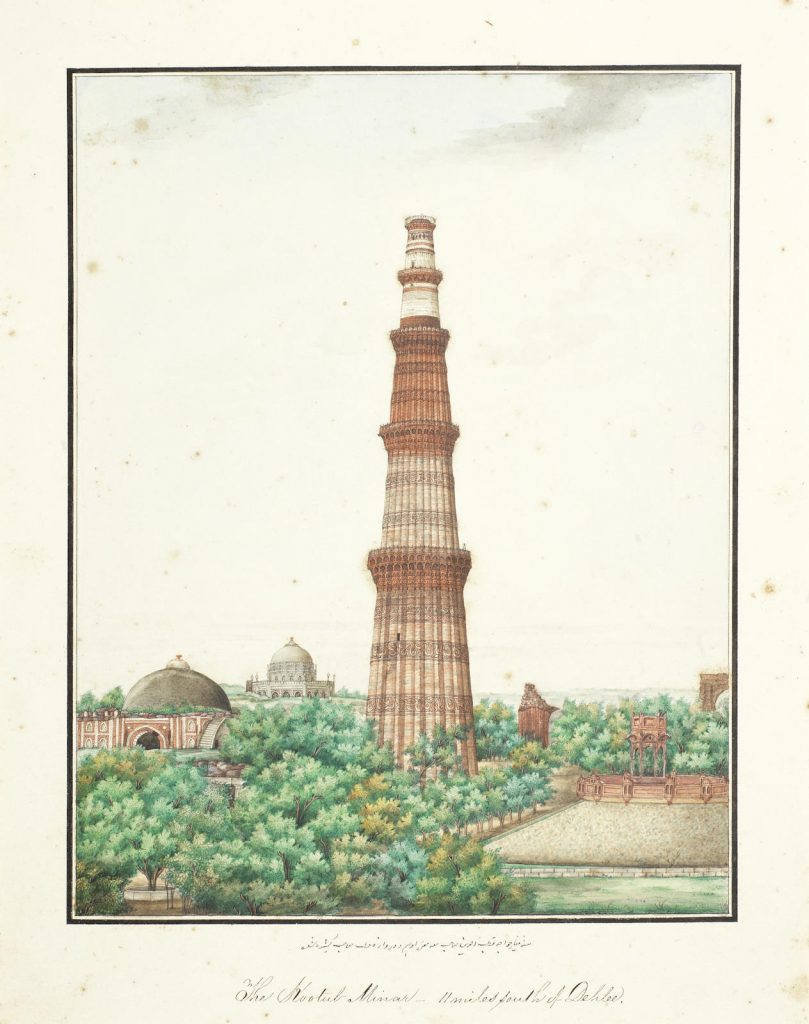
Ghulam Ali Khan, Qutub Minar, ca. 1852 to 1854. Wikimedia Commons (Public Domain).
Restoration Initiatives of the 19th-Century
In 1803, the Qutub Minar once more faced structural damages caused by a powerful earthquake. The upper level had collapsed and Firoz Shah Tughluq’s cupola was irreparably damaged.
The British Raj commissioned restoration measures to Major Robert Smith of the Bengal Engineers. By the year 1829, Major Smith completed the restoration and made some significant stylistic changes to the Qutub Minar. He replaced the cupola of Firoz Shah Tughluq, which had featured an Indo-Islamic design, with a chatthri-style cupola inspired by a Bengali-Hindu design. The result was so outlandish that in 1848 the Governor General of India, Viscount Hardinge, took down Smith’s cupola and placed it at the ground level to the east of Qutab Minar where it still stands today and is known as Smith’s Folly!
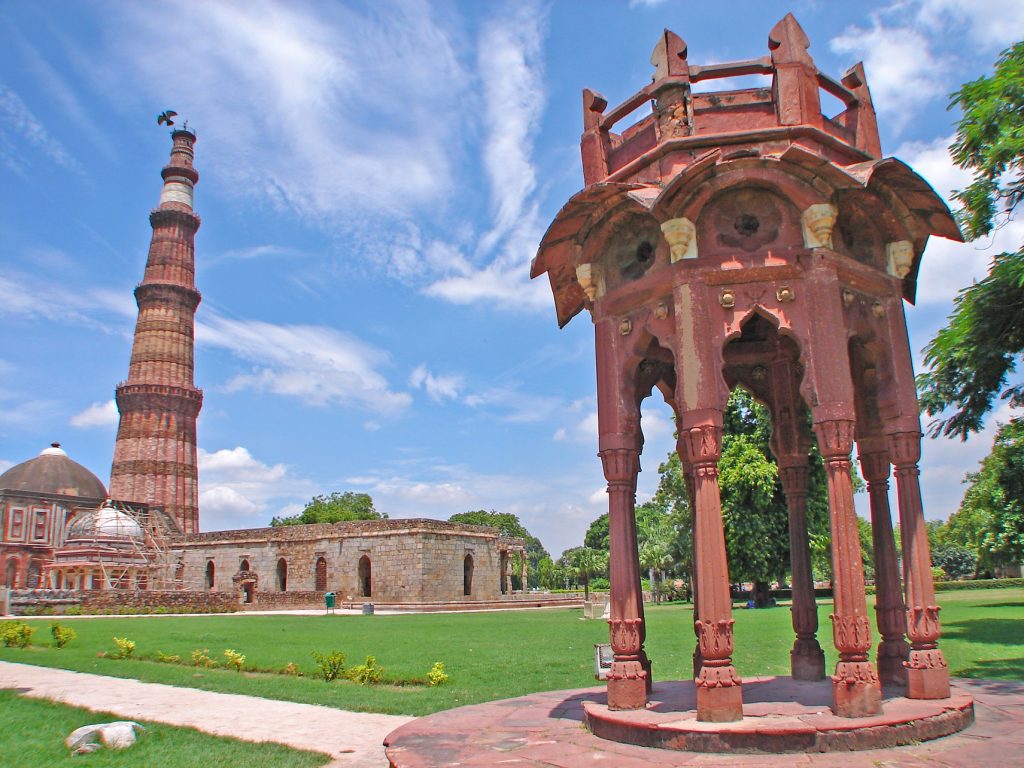
View of Smith’s Folly or Smith’s Cupola with the Qutub Minar in the background. Photograph by Itsmalay~commonswiki via Wikimedia Commons (CC-BY-SA-4.0).
Architectural Legacy of Ala ud-Dīn Khaljī
The notorious Afghan general, Ala ud-Dīn Khaljī, usurped the Delhi Sultanate by killing his predecessor and father-in-law, Jalal ud-Din, in 1296 CE. Khaljī was a controversial sultan and an aggressive military general who bestowed upon himself the moniker Sikander-i-Sani, or the second Alexander.
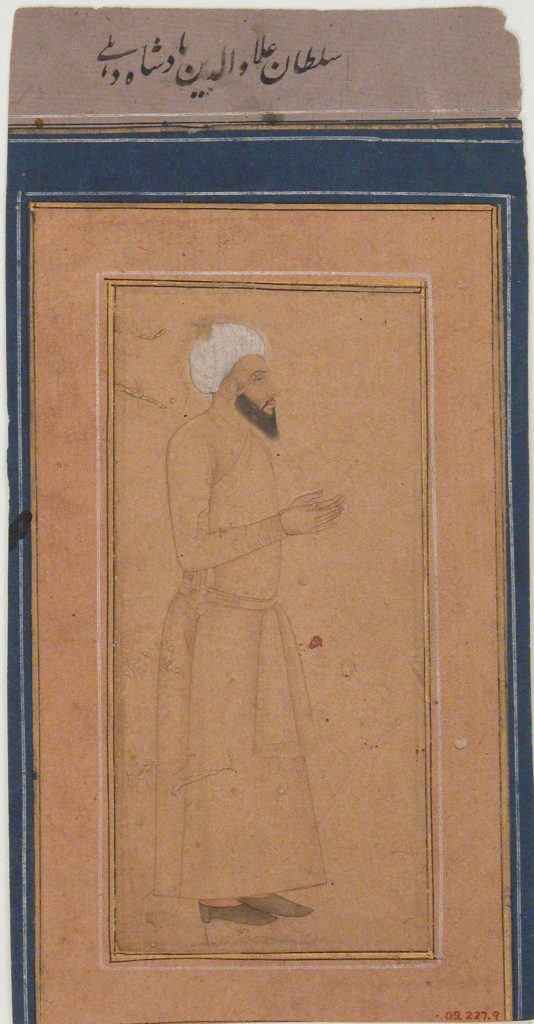
Portrait of Sultan ‘Ala-ud-Din, Padshah of Delhi, ca. late 17th century. The Metropolitan Museum of Art, New York, NY, United States.
During his short reign between 1296 and 1311, Khaljī undertook considerable expansions. His conquests extended over vast territories of the South Asian subcontinent and he was exceedingly successful. Once the wealth started pouring into the coffers, Khaljī set out to outdo the architectural prowess of his predecessors.
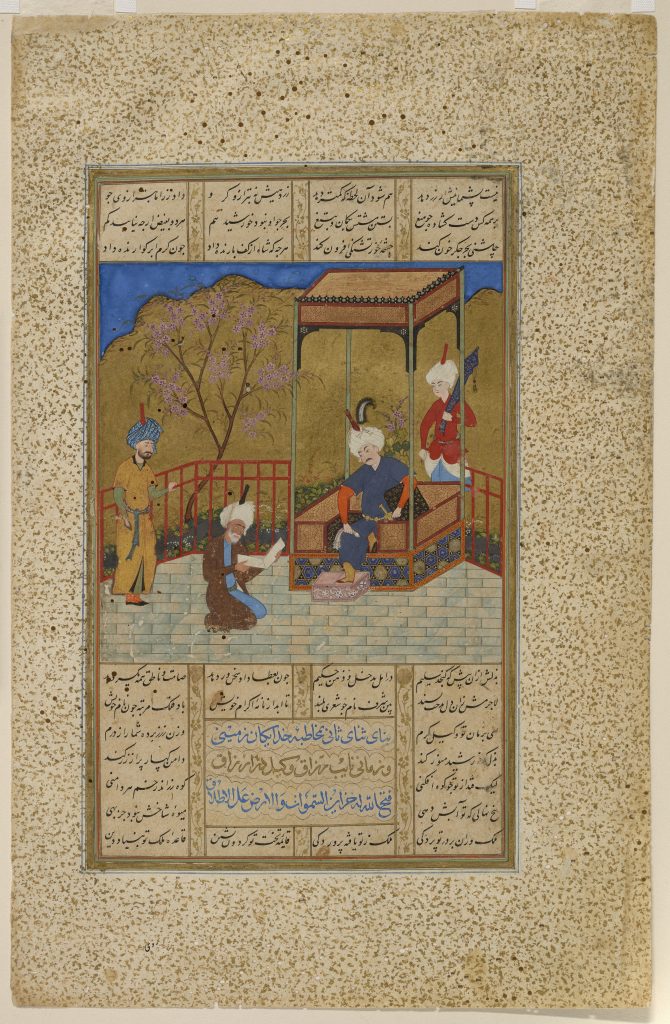
Amir Khusraw presents a book of poetry to Ala ud-Din Khalji, Folio from a Khamsa (Quintet) by Amir Khusraw Dihlavi, ca. 1503-1504. National Museum of Asian Art, Washington DC, United States.
Khaljī was an ambitious man with a penchant for the rare, and his commissions were a testament to his exuberance. He had grand ambitions and had planned several improvements and expansions in the Qutub Complex to show his gratitude to the divine for his sharp rise to power. He set into motion expansion initiatives to significantly increase the size of the mosque. He commissioned several other structures in the complex including madrasas, or Islamic seminaries, the iconic Alai Darwaza, and the incomplete Alai Minar. Khaljī was eventually buried in the Qutub Complex.

Indian actor Ranveer Singh as Ala ud-Dīn Khaljī. Movie still from the 2018 feature film, Padmaavat via Indian Express website.
Alai Darwaza
Completed in 1311, the Alai Darwaza was a large ceremonial gateway in the shape of a domed building that features a striking combination of white marble with red sandstone. The interior of the gateway is intricately adorned with geometric patterns carved into the surfaces.
The Incomplete Alai Minar
The construction for the Alai Minar commenced around 1300 CE, and Khaljī intended it to be twice the height of the Qutub Minar. Khaljī’s ambitions were halted by his untimely demise in 1316 and construction was abandoned after only one level. A rough-edged structure remains standing today at 82 feet (25 m) high.
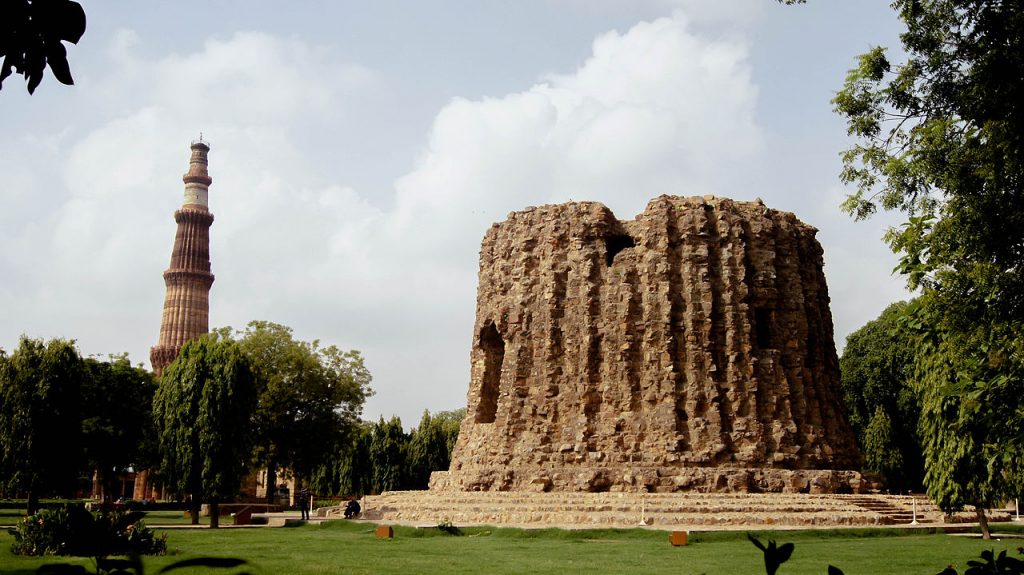
View of Alai Minar with Qutub Minar in the background. Photograph by Vineegautam987 via Wikimedia Commons (CC-BY-SA-3.0).
The Tombs of the Qutub Complex
The Qutub complex features prolific tombs that likely pioneered the tradition of grand royal tombs in the Indian subcontinent.
Notable burials include Shams ud-Din Iltutmish, the second Sultan of Delhi, whose tomb was constructed in 1235 CE and is known for its breathtakingly ornate façade on both the entrance and interior walls. The interior west wall has a mihrab or prayer niche that is decorated with marble and features a synthesis of Hindu motifs in Islamic architecture.
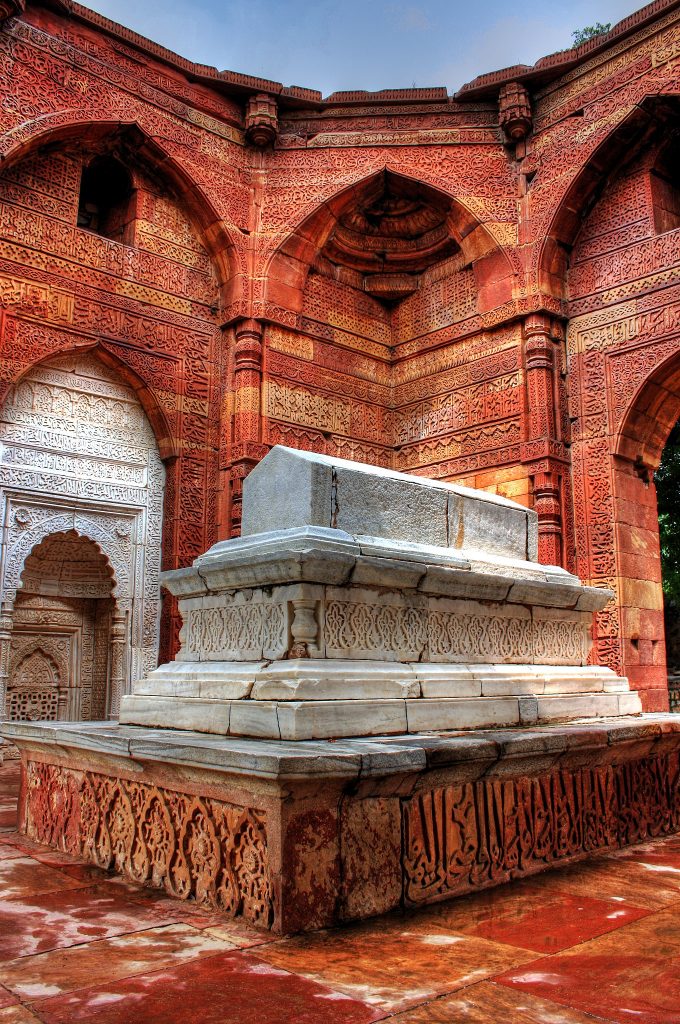
View of the Tomb of Shams ud-Din Iltutmish. Photograph by Pallav.journo via Wikimedia Commons (CC-BY-SA-3.0).
Ala ud-Dīn Khaljī was also laid to rest in the Qutub Complex; however much of his tomb is heavily dilapidated in the present day. The madrasas of Khaljī are located in the adjoining areas of the tomb, as is the incomplete Alai Minar.
Another significant burial in the complex is that of Islamic cleric Mohammad Ali, also known as Imam Zamin, who migrated to India from Turkestan under the reign of Sikandar Lodi. The tomb was built in the Mughal period in the 16th century during the reign of Humayun.
The Iron Pillar of the Gupta Dynasty
The iron pillar in the Qutub Complex is possibly the oldest structure on the site. It is believed that the pillar was cast around the 6th century CE, during the late period of the esteemed Gupta dynasty, and was later relocated to the Qutub Complex. It bears an inscription in the ancient Brahmi script of the 4th century that denotes an incantation in Sanskrit to the Hindu God, Vishnu.
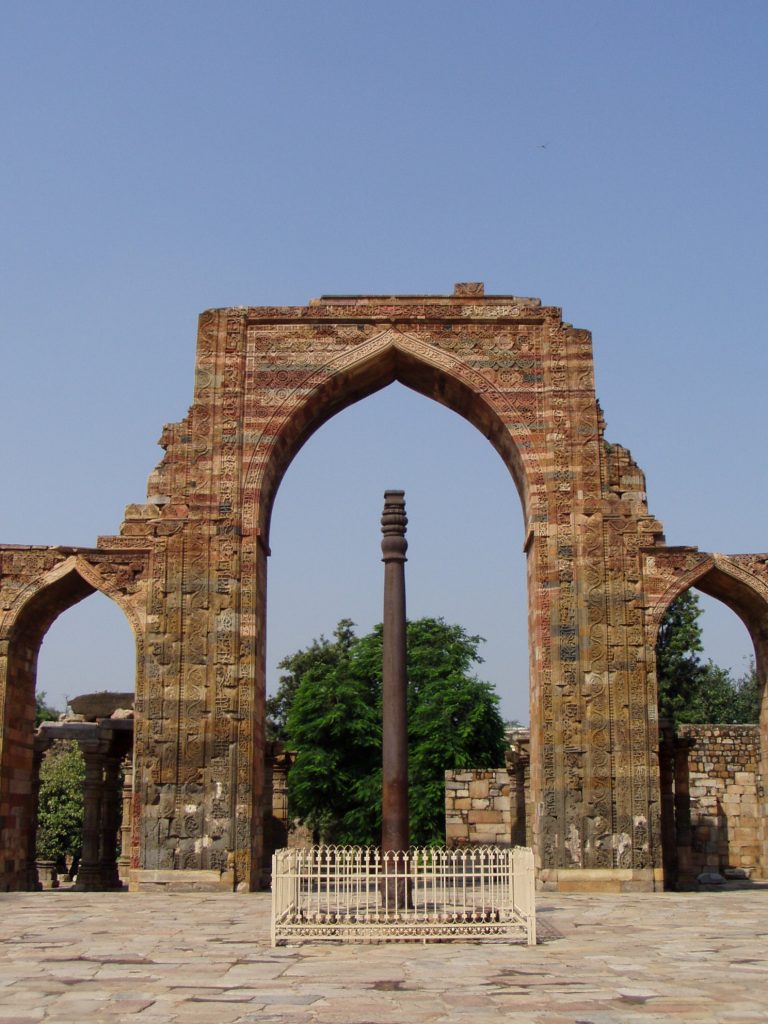
Iron Pillar in the courtyard of the Quwwat-ul-Islam Mosque, Photograph by e1ther via Wikimedia Commons (CC-BY-2.0)
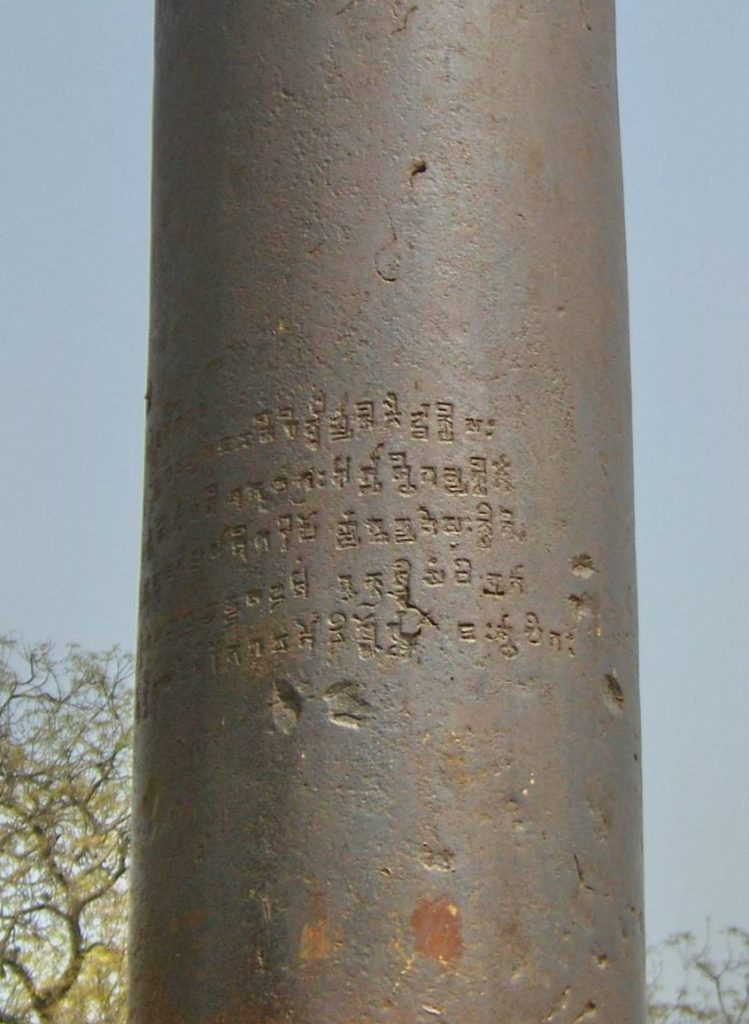
Inscription of the iron pillar. Photograph by ~shuri via Wikimedia Commons.
The iron pillar has been revered for the advanced metallurgical properties of the Guptas’ as the pillar has remarkably resisted rust for about 2000 years and is in near-pristine condition.
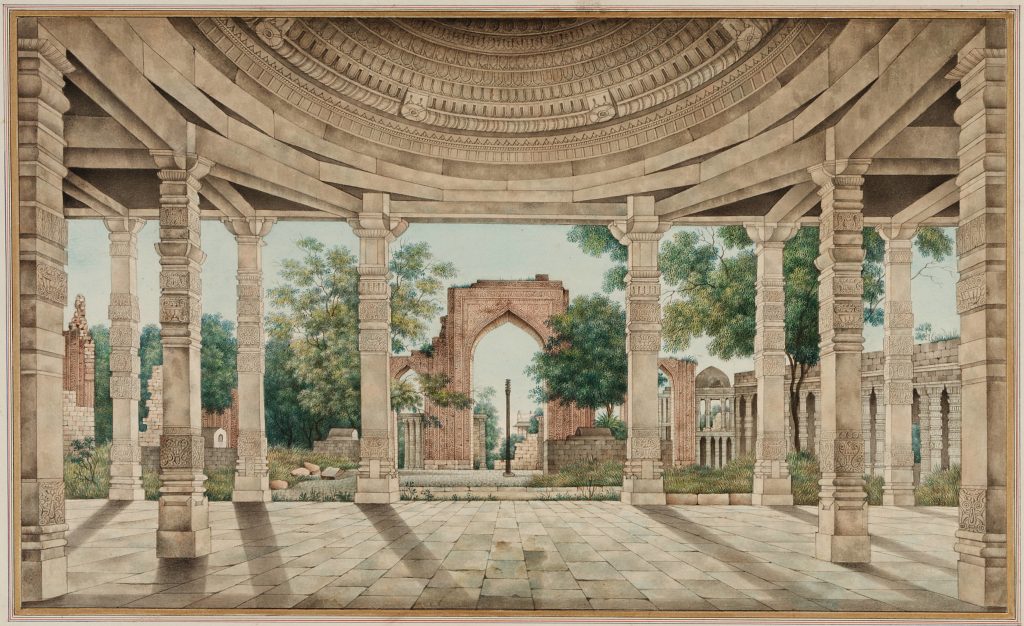
The Mosque of Delhi and the Iron Pillar, ca. mid-19th century. National Museum of Asian Art, Washington DC, United States.
Tourism and Events at the Qutub Complex
The Qutub Complex has been designated as a UNESCO World Heritage Site, and the Qutub Minar features frequently as an icon of tourism in India, New Delhi in particular.
While the Qutub Minar was open to visitors in the past, an electric failure on December 4, 1981 caused a mass stampede that resulted in 45 fatalities. It has remained closed to the public ever since.
Today the Qutub Complex is not only a heavily frequented tourist site, but is also the venue for the annual five-day Qutub Festival, held between November and December each year. It is a cultural event that involves a gathering of musicians, artists, and dancers at this historic site.

Qutub Festival 2019. Event illustration by alhind.com via Facebook.
